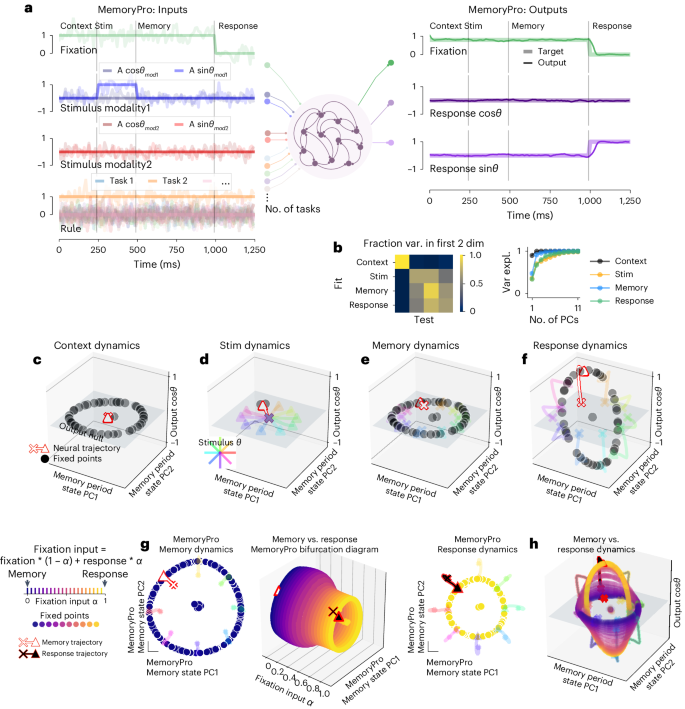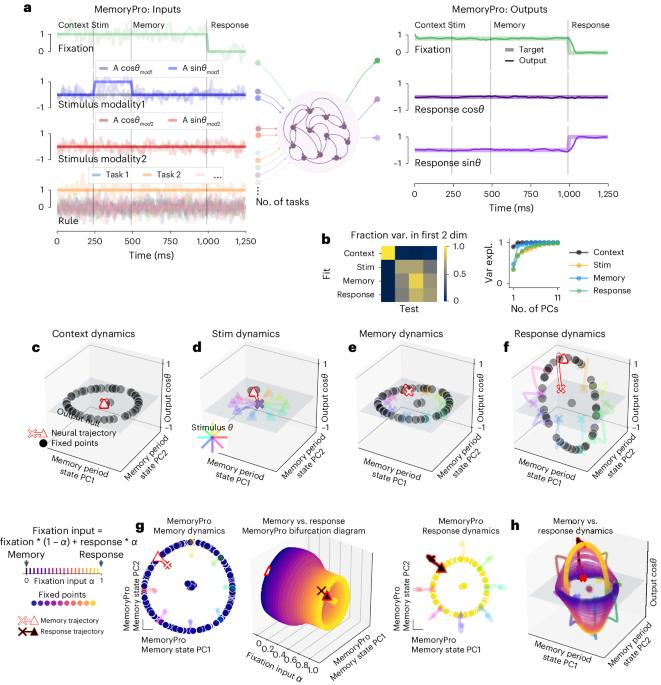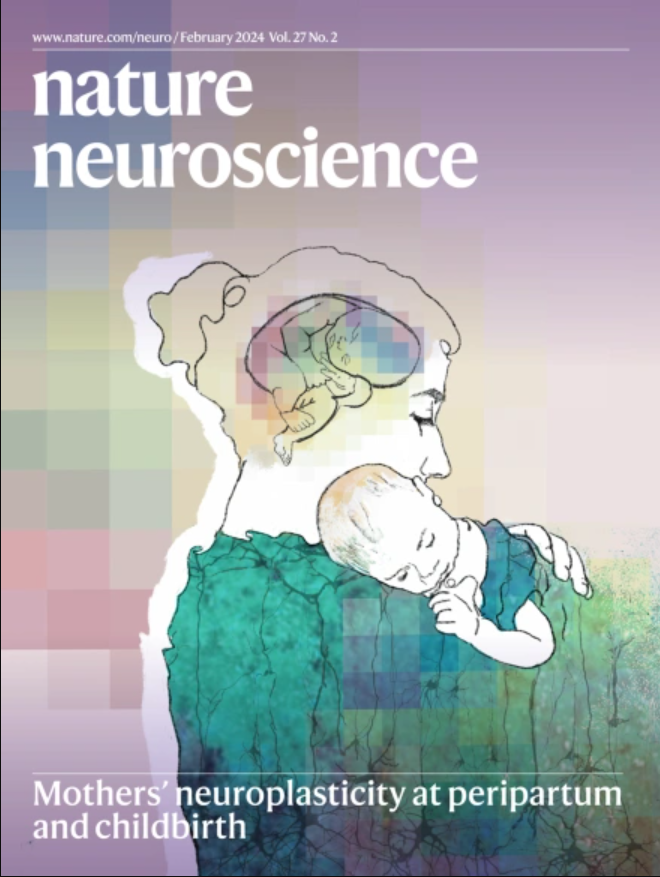Flexible multitask computation in recurrent networks utilizes shared dynamical motifs
IF 21.2
1区 医学
Q1 NEUROSCIENCES
引用次数: 0
Abstract
Flexible computation is a hallmark of intelligent behavior. However, little is known about how neural networks contextually reconfigure for different computations. In the present work, we identified an algorithmic neural substrate for modular computation through the study of multitasking artificial recurrent neural networks. Dynamical systems analyses revealed learned computational strategies mirroring the modular subtask structure of the training task set. Dynamical motifs, which are recurring patterns of neural activity that implement specific computations through dynamics, such as attractors, decision boundaries and rotations, were reused across tasks. For example, tasks requiring memory of a continuous circular variable repurposed the same ring attractor. We showed that dynamical motifs were implemented by clusters of units when the unit activation function was restricted to be positive. Cluster lesions caused modular performance deficits. Motifs were reconfigured for fast transfer learning after an initial phase of learning. This work establishes dynamical motifs as a fundamental unit of compositional computation, intermediate between neuron and network. As whole-brain studies simultaneously record activity from multiple specialized systems, the dynamical motif framework will guide questions about specialization and generalization. The authors identify reusable ‘dynamical motifs’ in artificial neural networks. These motifs enable flexible recombination of previously learned capabilities, promoting modular, compositional computation and rapid transfer learning. This discovery sheds light on the fundamental building blocks of intelligent behavior.


利用共享动态图案在递归网络中进行灵活的多任务计算
灵活计算是智能行为的标志。然而,人们对神经网络如何针对不同计算进行上下文重组知之甚少。在本研究中,我们通过对多任务人工递归神经网络的研究,确定了模块化计算的算法神经基底。动态系统分析显示,学习到的计算策略反映了训练任务集的模块化子任务结构。动态图案是神经活动的重复模式,通过吸引子、决策边界和旋转等动力学实现特定计算,这些图案在不同任务中被重复使用。例如,需要记忆连续循环变量的任务会重复使用相同的环形吸引子。我们的研究表明,当单元激活函数被限制为正值时,动态图案是由单元集群实现的。集群病变会导致模块表现缺陷。在经过初始学习阶段后,动机被重新配置以实现快速迁移学习。这项研究确立了动态图案是介于神经元和网络之间的基本组成计算单元。随着全脑研究同时记录来自多个特化系统的活动,动态图案框架将为有关特化和泛化的问题提供指导。
本文章由计算机程序翻译,如有差异,请以英文原文为准。
求助全文
约1分钟内获得全文
求助全文
来源期刊

Nature neuroscience
医学-神经科学
CiteScore
38.60
自引率
1.20%
发文量
212
审稿时长
1 months
期刊介绍:
Nature Neuroscience, a multidisciplinary journal, publishes papers of the utmost quality and significance across all realms of neuroscience. The editors welcome contributions spanning molecular, cellular, systems, and cognitive neuroscience, along with psychophysics, computational modeling, and nervous system disorders. While no area is off-limits, studies offering fundamental insights into nervous system function receive priority.
The journal offers high visibility to both readers and authors, fostering interdisciplinary communication and accessibility to a broad audience. It maintains high standards of copy editing and production, rigorous peer review, rapid publication, and operates independently from academic societies and other vested interests.
In addition to primary research, Nature Neuroscience features news and views, reviews, editorials, commentaries, perspectives, book reviews, and correspondence, aiming to serve as the voice of the global neuroscience community.
 求助内容:
求助内容: 应助结果提醒方式:
应助结果提醒方式:


